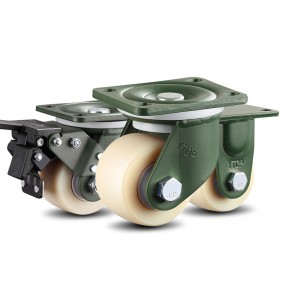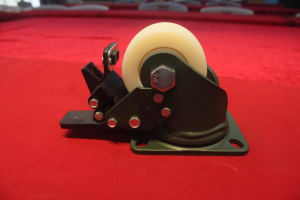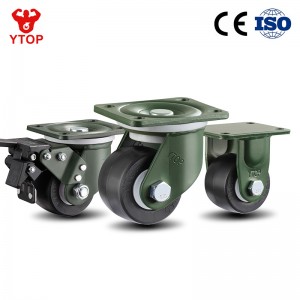Low center of gravity casters are special casters that are designed to allow for a lower center of gravity, thus improving the stability and maneuverability of the equipment. These casters are widely used in a variety of equipment and vehicles that need to move in a stable manner, especially in high-speed transportation, on uneven ground, or where precise maneuvering is required.
The principle of low center of gravity casters is based on the principle of stability of an object, i.e. the lower the center of gravity of an object, the higher its stability. Conventional caster designs have a high center of gravity, which creates instability and the risk of tipping. Low center of gravity casters, on the other hand, lower the center of gravity of an object closer to the ground by changing the layout and structure of the caster, thus significantly improving the stability and maneuverability of the equipment.
The most significant advantage of low center of gravity casters is their stability. The lower center of gravity makes the equipment or vehicle more stable when moving, reducing the risk of tipping over. This is especially important for heavy equipment, large containers or high-value equipment, where the likelihood of damage or accidents is greatly reduced.
In addition, low center of gravity casters have less rolling resistance, making movement easier. Whether manually pushed or driven by a motor, the force and energy required is reduced, increasing efficiency. At the same time, low center of gravity casters have a relatively longer service life due to reduced wear. Low center of gravity casters are used in a wide range of applications including, but not limited to, industrial equipment, industrial handling, medical equipment, commercial cabinets, computer server cabinets, and more. All of these areas require highly stable and maneuverable equipment and vehicles to improve efficiency and safety. As technology continues to advance, low center of gravity caster technology will continue to evolve and be used in more areas. Future innovations may include more advanced materials, smarter control systems and greater adaptability.
Post time: May-08-2024



